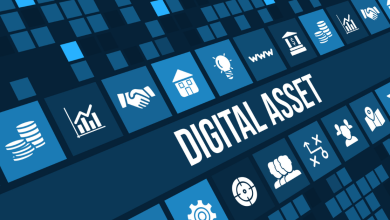
Demat account vs. trading account: Key differences
Planning to trade in the stock market to earn returns and grow your capital? To get started, you need two accounts, i.e., a demat account and a trading account. Many confuse these terms and assume they serve the same purpose, but that’s not the case. Even though both accounts are closely connected to each other, they serve entirely different purposes in the trading process.
Let’s learn how these accounts work, why both are crucial for stock market participation, and how choosing the right platform can improve your trading experience
What is a dematerialised (demat) account?
A demat account acts as a digital vault for your securities. It holds stocks, Mutual Funds, Exchange-Traded Funds (ETFs), and other purchases in electronic format. A demat account eliminates the risks of theft, loss, or damage that come with physical share certificates. Moreover, it enables you to receive benefits like dividends, returns, or interest automatically when they are distributed by a company.
At present, two depositories are registered with the Securities and Exchange Board of India (SEBI) to hold financial securities:
- Central Depository Services (India) Limited (CDSL)
- National Securities Depository Limited (NSDL)
What is a trading account?
Every transaction in the stock market happens through a stock exchange, such as the National Stock Exchange (NSE) and Bombay Stock Exchange (BSE). A trading account connects you to these exchanges and lets you place buy or sell orders. In simple words, it links your bank account (for payments) and demat account (for share storage).
Demat vs trading accounts | Key differences
A few notable differences between a demat and a trading account are:
| Feature | Demat account | Trading account |
| Requirement | Needed for holding securities | Needed for stock market transactions |
| Nature | Similar to a bank account | Similar to a brokerage account |
| Role in IPOs | Mandatory for applying to IPOs | Required for trading IPO shares post listing |
| Transaction type | Securities are credited or debited based on buying and selling | Orders are placed and executed on stock exchanges |
How demat and trading accounts work together
The trading ecosystem works through an interconnected system of three accounts, i.e., trading, demat, and bank. When you buy shares, your trading account places the order, the bank account pays for it, and the shares are stored in your demat account. When you sell, the trading account executes the sale, the demat account transfers shares, and the money gets credited to your bank account.
Let’s understand better with an example:
- You buy 100 shares at ₹100 per share.
- Your trading account places the order on NSE/BSE.
- Your bank account pays ₹10,000 to complete the transaction.
- 100 shares are credited to your demat account.
If you decide to sell 50 shares later at ₹110 per share:
- Your trading account executes the sale of 50 shares.
- The demat account debits the shares.
- After settlement, the sale proceeds of ₹5,500 get credited to your bank account.
As you can see, all three accounts (demat, trading, and bank) work together to enable you to trade in stocks hassle-free.
Ending note
A demat and a trading account may serve different purposes, but both are necessary to participate in the stock market. Without a demat account, you will not be able to hold shares digitally, and without a trading account, it is not possible to buy or sell securities.
Also, remember that a smooth trading experience largely depends on the trading app you choose. It is wise to consider MO Riise, which is backed by the legacy of Motilal Oswal, a SEBI-registered public entity trusted by 40+ lakh traders. This next-generation trading app lets you open a demat account in just 15 minutes and start trading without delay.
Moreover, charts and indicators, multiple order types, expert research on stocks, lightning-fast order execution, educational materials, and 24/7 assistance make trading more efficient.
Begin trading with MO Riise Stock Market App today!




